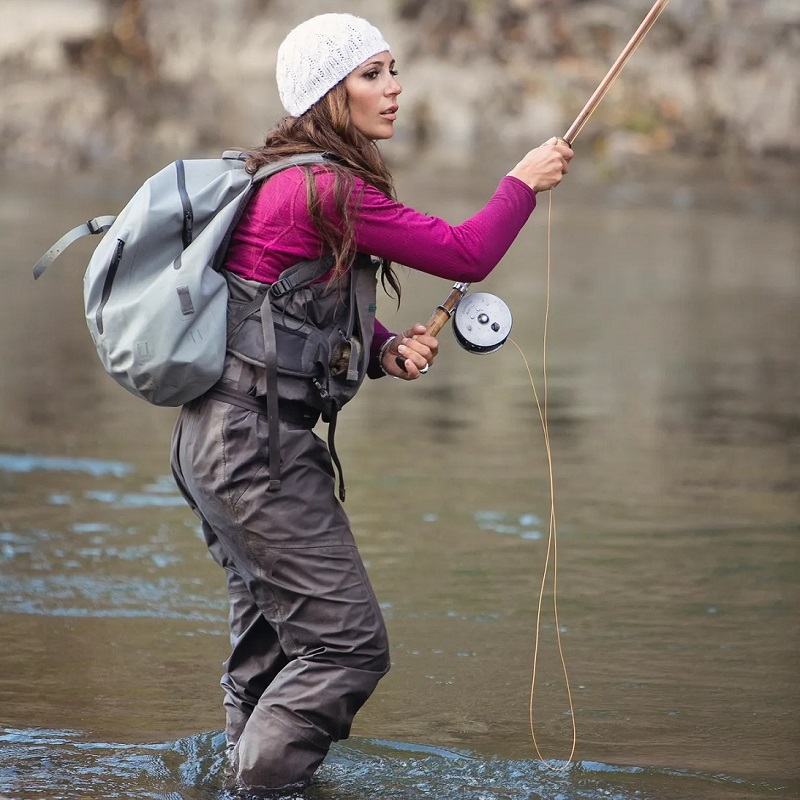Introduction
When you’re out on the water, having the right gear is crucial to enjoying a successful fly fishing experience. Among the most essential pieces of equipment are reliable fly fishing waders. Proper waders keep you dry, warm, and comfortable while allowing for freedom of movement as you cast your line and reel in fish. Given the multitude of options available on the market, it can be challenging to select the best fly fishing waders for your specific needs.
In this comprehensive buyer’s guide, we will delve into the key factors to consider when choosing fly fishing waders, including the different types, essential features, materials, and maintenance tips. Whether you’re a seasoned angler or a beginner just starting, understanding these elements will help you make an informed decision, ensuring your time on the water is both enjoyable and productive.
Types of Fly Fishing Waders
1. Chest Waders
Firstly, chest waders are a popular choice among fly fishers, providing full coverage and protection while wading into deeper waters.
- Full Protection: These waders extend up to your chest, ensuring you stay dry even when wading in deep rivers or lakes. The added height can protect against cold water and unexpected splashes, particularly important in colder climates.
- Features: Moreover, many chest waders come with adjustable straps and built-in belts for a secure fit. Additionally, they often include pockets for easy access to tools and gear. Their versatility makes them suitable for a range of fishing environments, from fast-flowing streams to calm lakes.
2. Waist Waders
On the other hand, for those who prefer a lighter option, waist waders are a viable choice.
- Lightweight Design: Waist waders extend to the waist and are easier to put on and take off. They provide sufficient protection for shallower wading, making them ideal for warm-weather fishing.
- Comfort and Mobility: These waders allow for more freedom of movement compared to chest options, making them a great choice for anglers who need to navigate rocky shores or fast-moving waters. Furthermore, waist waders often weigh less, meaning less burden during long hikes.
3. Hip Waders
Additionally, hip waders, as the name suggests, rise to the hip and are typically used in shallow waters, offering an excellent compromise between coverage and mobility.
- Ideal for Shallow Waters: These are great for fishing in marshes, mudflats, or when you need to cross shallow streams. They are particularly useful for catching fish in habitats with rich vegetation where deeper wading isn’t necessary.
- Easy to Use: Like waist waders, hip waders are easy to put on and take off. Since they are lighter, they are also easier to store in a vehicle or a fishing pack. Thus, they can be ideal for quick trips or casual fishing outings.
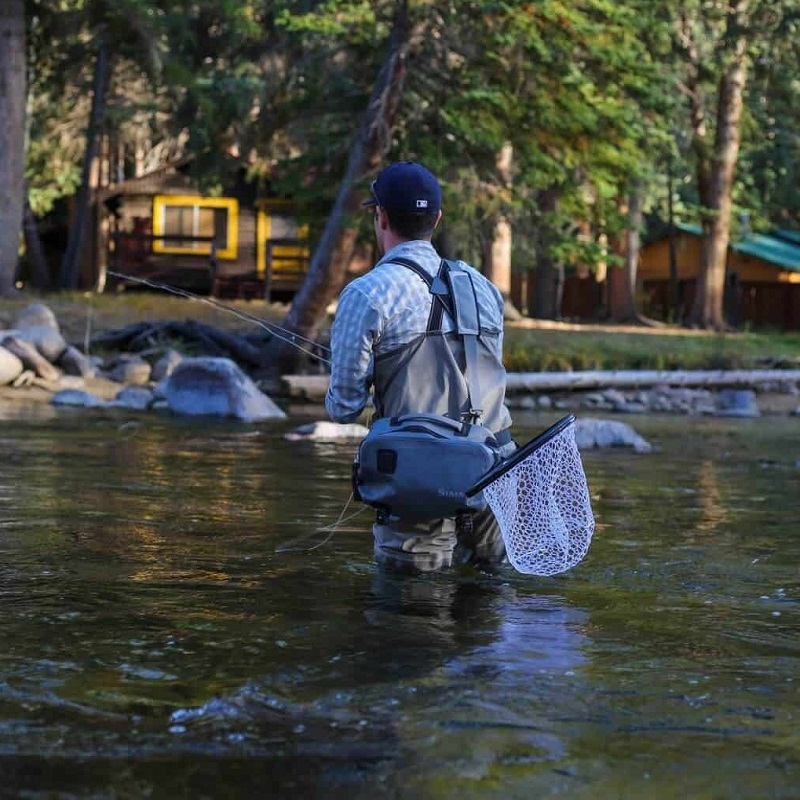
Key Materials Used in Fly Fishing Waders
The material your waders are made from directly affects their durability, comfort, and overall performance in the water.
1. Neoprene Waders
Neoprene is well-known for its insulation properties and is commonly used in fly fishing waders.
- Insulation: One significant advantage of neoprene is its excellent thermal insulation, making it suitable for cold weather. It keeps anglers warm even in chilly conditions, which is essential for early morning fishing trips or winter fishing.
- Durability: Additionally, this material is robust and resistant to punctures, which is critical for rugged environments where waders may encounter sharp rocks, sticks, and other hazards. Consequently, neoprene waders provide a solid choice for serious anglers.
2. Breathable Waders
Conversely, breathable waders have gained immense popularity among fly anglers, especially during warmer seasons.
- Moisture Control: Made from lightweight, breathable fabrics, these waders help regulate temperature by allowing moisture to escape while keeping cold water out. This feature is particularly advantageous in preventing overheating during hot summer days.
- Versatility: Because breathable waders can be worn comfortably in various weather conditions, they are a versatile choice for anglers who fish throughout the year. Therefore, this type can be highly beneficial for those who do not wish to change gear frequently.
3. PVC Waders
On a different note, polyvinyl chloride (PVC) waders present an affordable and commonly used option for casual fishing.
- Affordability: Generally, PVC waders are less expensive than other materials, making them accessible for beginners or casual anglers who may not fish as often. Hence, they provide a budget-friendly option without sacrificing basic functionality.
- Waterproof: However, while PVC provides decent waterproofing, it lacks the insulation and breathability features of neoprene or breathable materials, making them less suitable for extreme conditions.
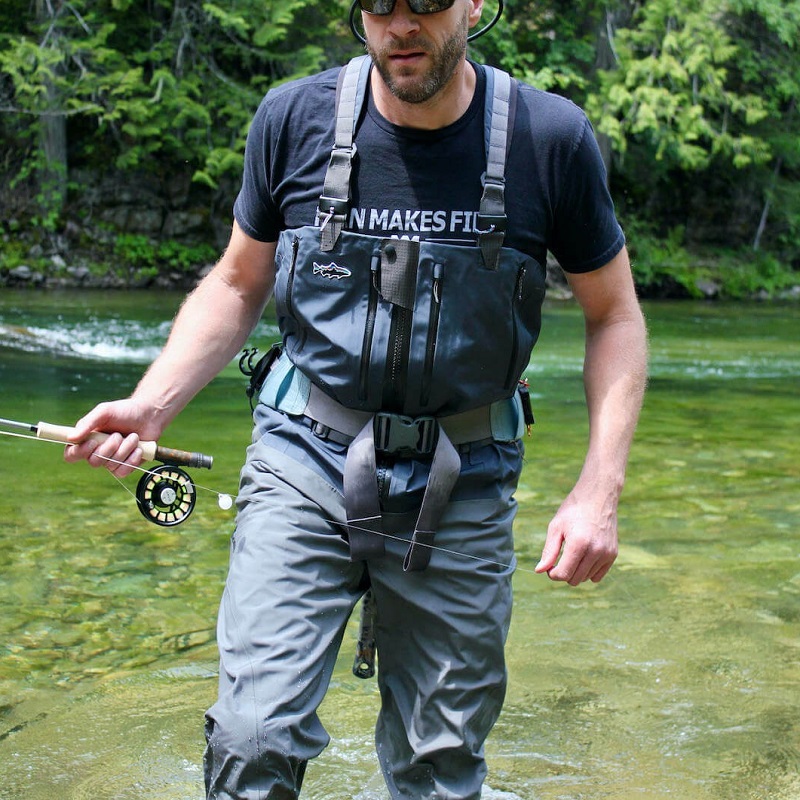
Essential Features to Look For in Fly Fishing Waders
Having the right features in your waders can make a significant difference in comfort and functionality while fishing.
1. Fit and Comfort
Finding waders that fit well is crucial for comfort and performance.
- Size Options: Pay close attention to the size chart provided by manufacturers. Many brands offer a range of size options, including regular, tall, and plus sizes, ensuring a comfortable fit for various body types and preferences.
- Adjustability: Also, you should choose models with adjustable straps and belts that allow for customization. A snug fit prevents waders from chafing while enhancing your range of motion as you cast and move.
2. Pockets and Storage
In addition, pockets provide essential storage solutions for anglers needing quick access to tools and gear.
- Pocket Placement: Look for waders with strategically placed pockets that keep your essential items close at hand—think tippet, flies, and snacks. Zippered pockets are particularly useful for securing small items.
- Tool Attachments: Some waders come equipped with attachment points for tools, making it easy to keep everything organized during your fishing trips. Therefore, investing in waders with this functionality can greatly enhance your efficiency.
3. Reinforcements and Durability
Another important aspect is durability, which is paramount, particularly in environments where wading poses risks.
- Reinforced Knees and Seat: Look for waders with reinforced knees or seats to enhance durability in high-wear areas. This feature is crucial for preventing punctures or tears, leading to longer-lasting waders.
- Seam Construction: Furthermore, check the seams and overall construction quality. Welded seams or double-stitched designs tend to be stronger and more leak-resistant than standard seams, which can prevent water from seeping in and keep you dry.
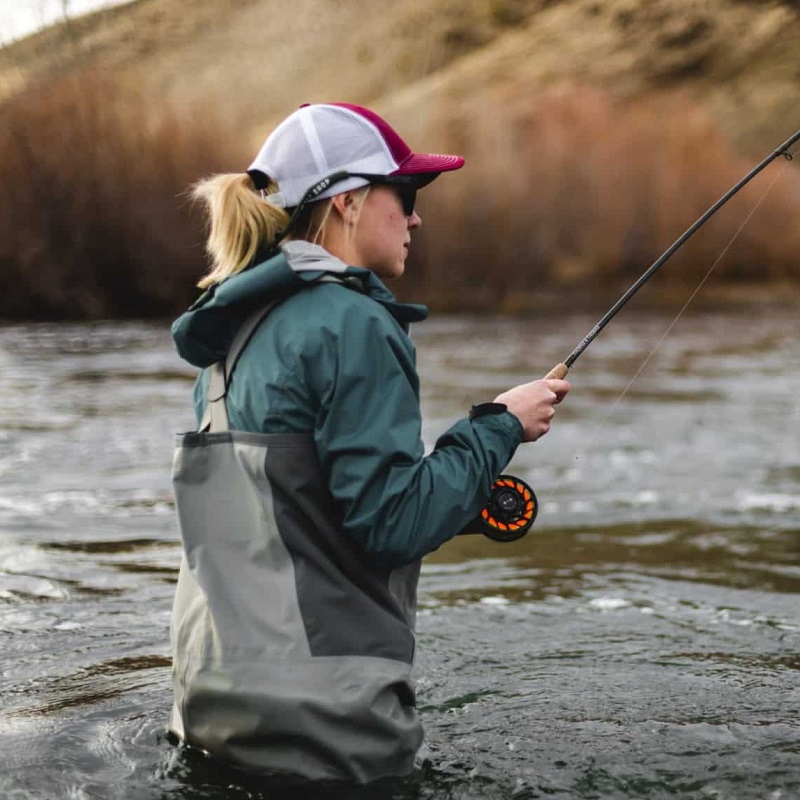
How to Properly Care for Your Fly Fishing Waders
1. Rinse and Dry
Taking care of your waders can significantly extend their life and maintain performance.
- Post-Fishing Rinse: Always rinse your waders with fresh water after use, especially when you’ve been fishing in saltwater or muddy conditions. Salt and dirt can deteriorate the materials over time, leading to faster wear and tear.
- Proper Drying: Hang your waders upside down to dry in a shaded area away from direct sunlight. This prevents fading and cracking. Ensure they are completely dry before storing them to avoid mildew or odor buildup. Cleaning them regularly after use also helps in maintaining their integrity.
2. Regular Inspections
Conducting regular inspections helps catch any issues before they worsen.
- Check for Leaks and Damage: Before each fishing trip, inspect your waders for leaks or signs of wear. Repair any holes or weak seams promptly using waterproof patches or industry-grade sealant.
- Maintenance Products: Consider using specialized treatments to maintain or restore breathability and water repellency, especially for breathable waders. Following the manufacturer’s guidelines will yield the best results and prolong the life of your waders.
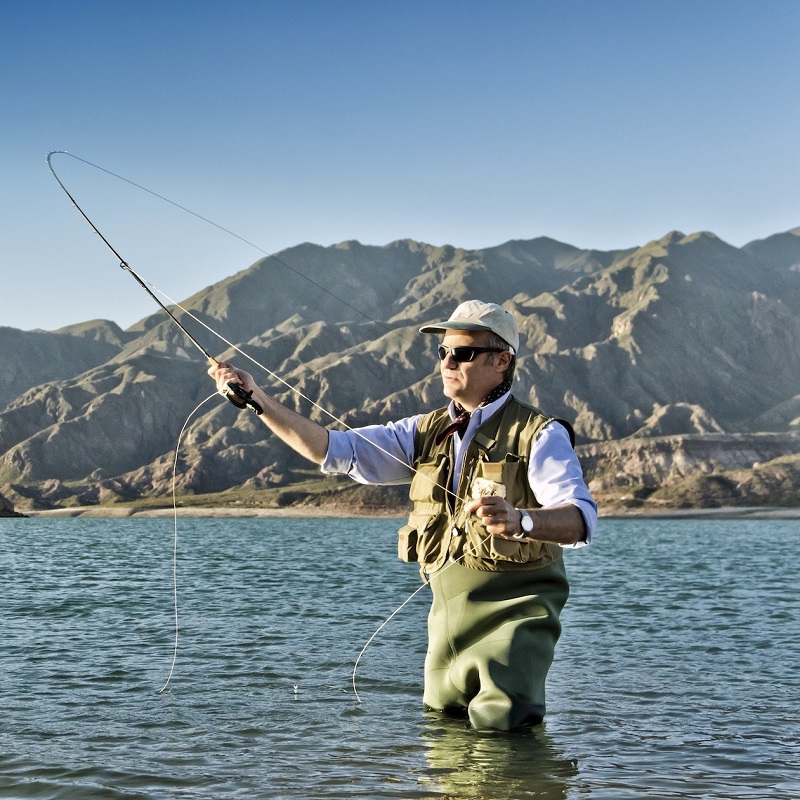
Popular Fly Fishing Wader Brands to Consider
As you search for the perfect pair of fly fishing waders, here are some reputable brands known for quality:
1. Simms
Simms is a highly regarded brand in the fly fishing community for its commitment to quality and performance. They offer a wide range of waders, from breathable options suited for summer fishing to insulated neoprene choices for colder environments.
2. Orvis
Known for its premium fishing gear, Orvis produces high-quality waders that often feature innovative designs. Their waders include ample pocket space and reinforced areas, making them practical for serious anglers.
3. Patagonia
Patagonia emphasizes sustainability and environmental responsibility, producing waders made from eco-friendly materials. Their products are not only durable but also align with the values of conservation that many anglers hold dear.
4. Redington
Redington offers a range of affordable yet high-quality options, making it accessible for beginner anglers. Their waders combine comfort and practicality, ensuring you can enjoy long days on the water without discomfort.
5. Hodgman
Hodgman waders are known for their rugged design and affordability. Suitable for both beginners and experienced anglers, they provide reliable performance without the premium price tag, making them a popular choice in the market.
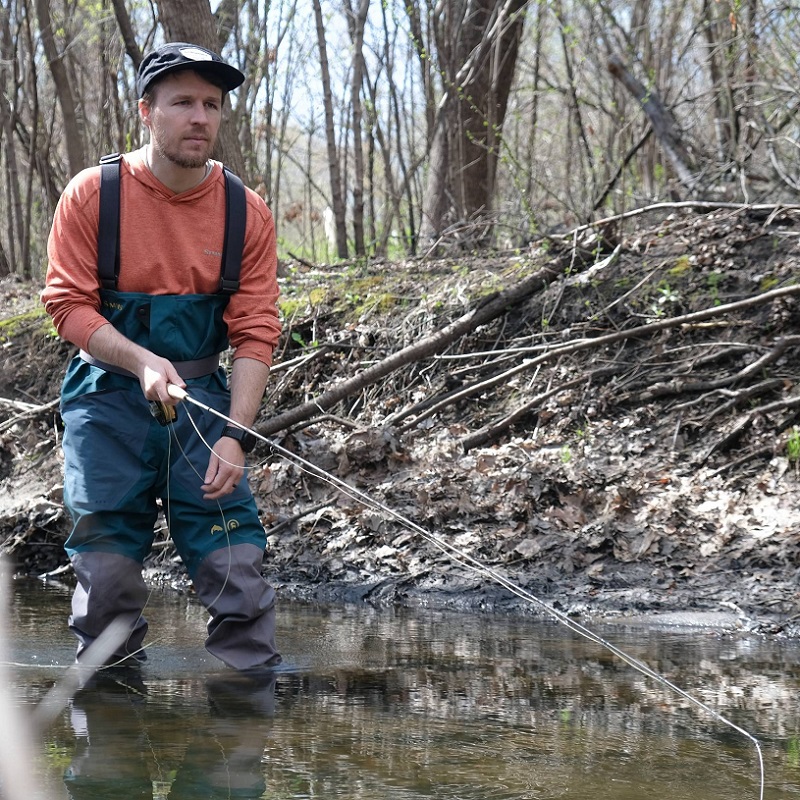
Tips for Maximizing Your Fly Fishing Experience
1. Layering for Temperature Control
When fishing in varying weather conditions, layering your clothing under your waders can help you regulate body temperature efficiently.
- Base Layers: Invest in moisture-wicking base layers made from synthetic or merino wool materials. These fabrics pull moisture away from your body and provide insulation to keep you warm.
- Mid Layers: For added warmth, consider a fleece or lightweight insulated jacket. Always ensure that you have enough insulation to maintain comfort without overheating while casting.
2. Choosing the Right Footwear
Your footgear is just as important as your waders for comfort and stability.
- Bootfoot vs. Stockingfoot: Decide between bootfoot waders (with integrated boots) or stockingfoot waders (requiring separate wading boots). Bootfoot waders may be easier to put on and take off but can be less flexible.
- Wading Boots: If you opt for stockingfoot waders, choose specialized wading boots with a non-slip sole for traction. Consider felt soles for slippery environments or studded soles for increased grip. Good footwear can help prevent slips and falls, especially on uneven terrain.
3. Practice Casting Techniques
Improving your casting technique will enhance your fly fishing experience.
- Casting Drills: Practice at home or in your backyard to build muscle memory. Focus on your wrist movement and aim to achieve smooth, fluid casts.
- Casting Lessons: Consider taking fly casting lessons from a professional. Many fly shops offer clinics where you can learn valuable techniques from experienced anglers. This is a great way to rapidly improve your skills and confidence.
Conclusion
In summary, selecting the right fly fishing waders is essential for ensuring comfort and performance on the water. By considering various types of waders, essential materials, key features, and maintenance tips detailed in this guide, you can find the perfect pair to suit your needs.
Quality fly fishing waders will keep you dry, warm, and protected during your fishing adventures, allowing you to enjoy your time on the water without inconvenience. Investing in a pair of waders that meet your specific preferences and requirements not only enhances your fishing experience but also allows you to master your craft as an angler.
As you prepare for your next fishing trip, remember to choose wisely. Proper fly fishing waders will be your ally in creating memorable moments on the water, ensuring that you can focus on what truly matters—catching fish!
